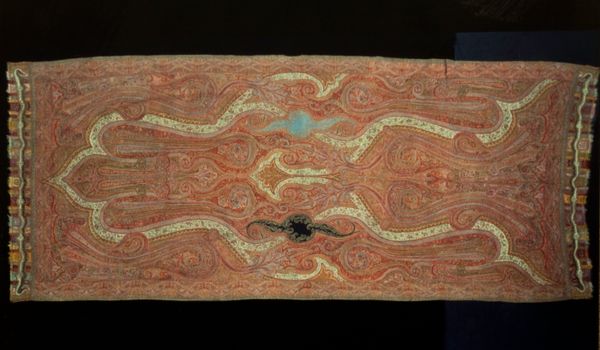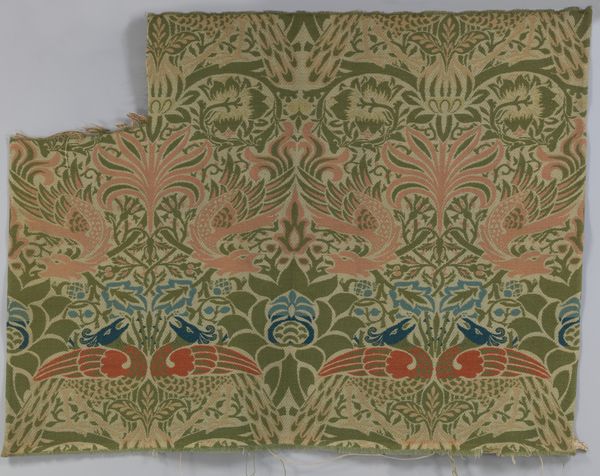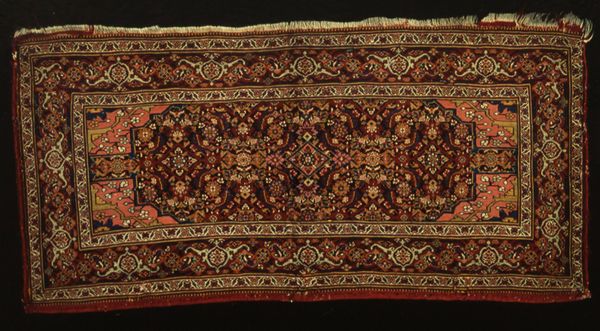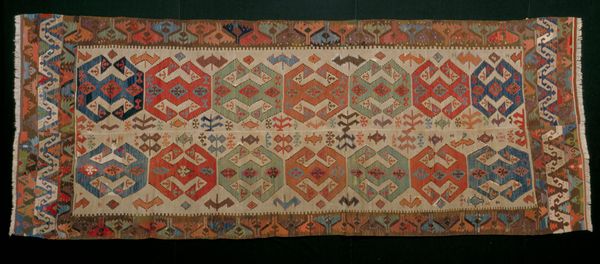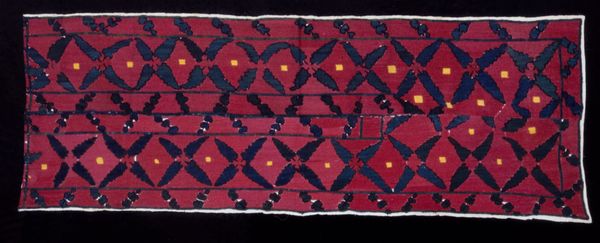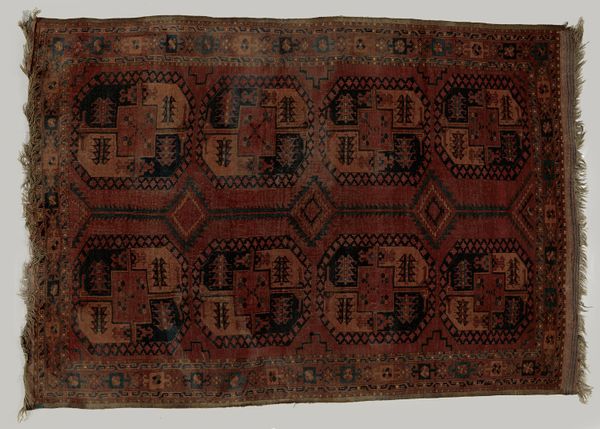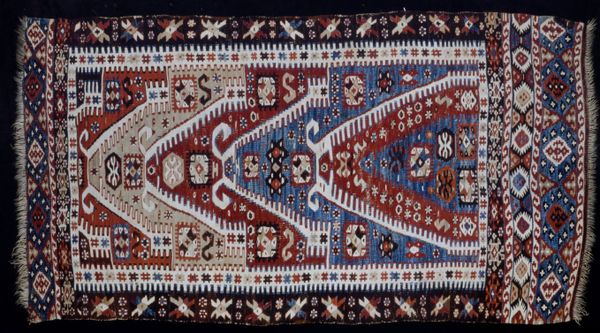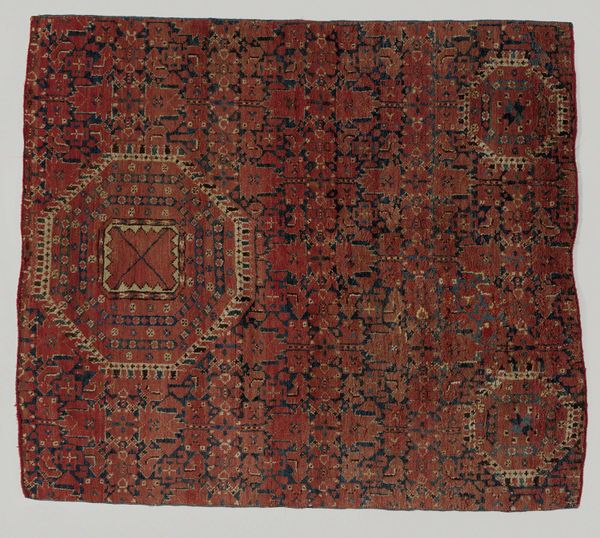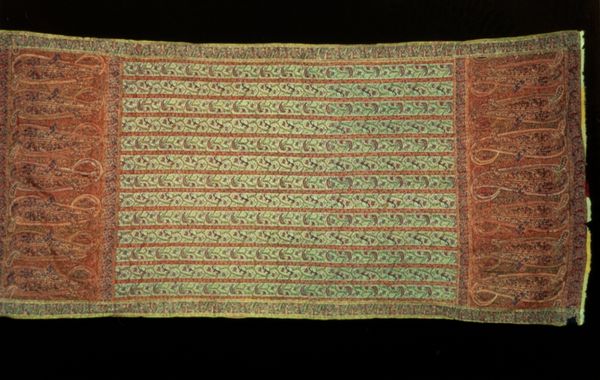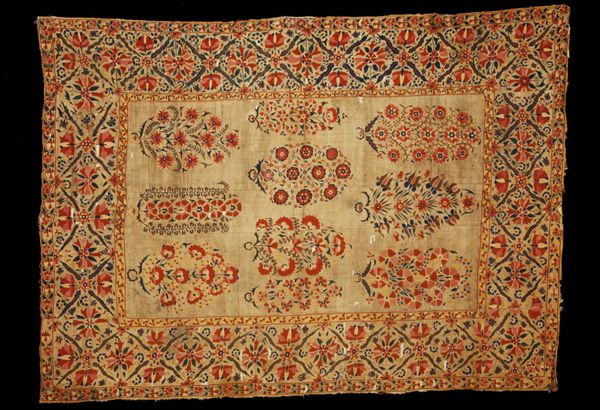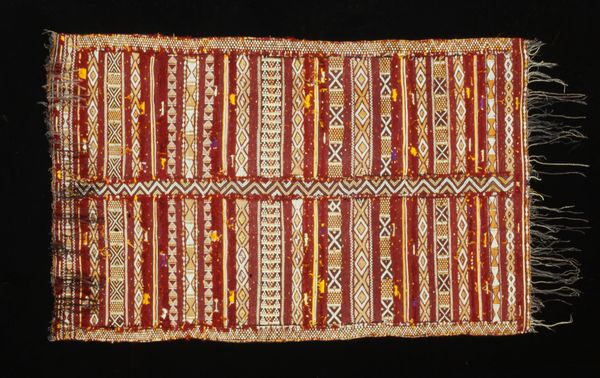
textile, cotton
#
textile
#
folk art
#
cotton
#
decorative-art
#
mixed media
#
decorative art
Copyright: Public Domain
Curator: Looking at this textile piece, I'm immediately drawn to its vibrant complexity. It has an almost kaleidoscopic feel. Editor: You've keyed into something that’s a feast for the eyes. We are looking at what's simply titled "Long Shawl," which experts believe was produced around the 19th century. It resides here at the Minneapolis Institute of Art. Curator: "Long Shawl" it may be called, but it certainly seems a lot more. Tell me more about the period when such works were in vogue, its purpose and significance. The repeated 'boteh' motif - similar to what we recognize as Paisley - how did this all serve social customs or aesthetic preferences? Editor: During the 19th century, shawls like these played crucial roles as fashion accessories, signifiers of social standing, and mediums of cultural exchange particularly via orientalism. High society valued them, and they influenced styles worldwide. Beyond mere garments, such creations showcase dialogues between diverse artistic traditions during this period and illustrate global trends, reflecting the complex histories embedded within even everyday objects. Curator: Absolutely. When my gaze lingers upon each delicate arabesque or minute teardrop-shape – those paisley forms you spoke about – it evokes powerful feelings within me; associations linking my ancestors, traditions woven deeply, resonating through symbolic ancestral echoes connecting humanity across time itself. Editor: Exactly. What's remarkable about textiles like this is how they managed both to be integrated into high fashion while holding strong links to folk traditions. Curator: Thinking of it, the repetitive motifs, the mirrored symmetry – they're visually calming despite the intricacy, speaking towards underlying, universally recognizable organizing templates deeply resonant throughout diverse spiritual or creative practices - acting as anchors across cultural understandings perhaps Editor: I would add also how access and understanding of such visual languages changed during this period as museum collections expanded to showcase an era's particular fascinations. It tells us as much about the collectors and audiences as the original craftspeople. Curator: Reflecting on it all now then, I now find increased significance when observing the shawl—a meeting point existing not only where visual splendor is present, but symbolizing intricate human interchange, interwoven deeply within collective remembrance through material presence - giving resonance connecting those touched generations beyond us today through continuing meanings evoked, timeless regardless whether seen displayed there framed protected; allowing everyone shared participation while engaging human narrative's flow Editor: And therein lies their continued importance—serving reminders interwoven intricately both socio-politically artistically—their significance resonates still as potent dialogue starting for exploration reflection allowing questions posed toward future.
Comments
No comments
Be the first to comment and join the conversation on the ultimate creative platform.

